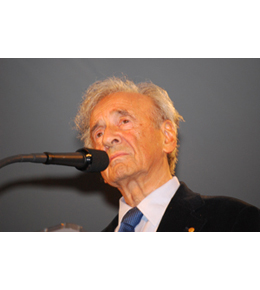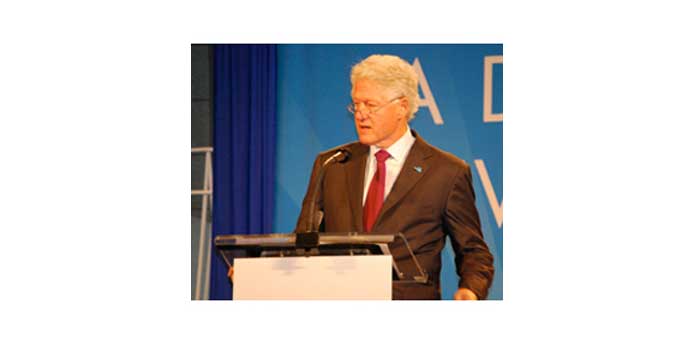Despite the rain and chilly temperatures Sunday, an estimated 12,000 people gathered to witness the grand opening of the Illinois Holocaust Museum and Education Center in Skokie.
“Deeply in every person, the forces of light and darkness do battle. When the darker forces prevail, the capacity for evil rises. That must always be remembered and opposed,” said former President Bill Clinton at the dedication.
Clinton discussed the importance of remembering the Holocaust and apologized for America’s delayed response to similar genocides in Rwanda and Kosovo.
“None of us should ever let another politician stampede us into hating someone else,” he said.
Clinton also recognized the significance of the museum’s location in Skokie, stating, “I think it is important that this place of remembrance and learning is here, not only because of what happened in Skokie three decades ago but because it is in the heartland of the country.”
The village’s high concentration of Holocaust survivors and strong ties to the Jewish community prompted the museum’s location. In October 1977, self-proclaimed neo-Nazis attempted to march through Skokie’s Birch Park, which led to a U.S. Supreme Court hearing. The march never took place, but it sparked the creation of the Holocaust Memorial Foundation of Illinois, and subsequently the Holocaust museum.
Holocaust survivor and Nobel laureate Elie Wiesel, Illinois Gov. Pat Quinn, German Ambassador Klaus Scharioth and Skokie Mayor George Van Dusen also spoke at the dedication.
“But I humbly tell you that if anyone would come to me and say ‘This is why it happened,’ I will not accept the answer because the answer is so horrendous it will fill our hearts with fear,” said Wiesel about the reasons for the Holocaust.
Wiesel spoke about his own personal experiences in a concentration camp.
“We must learn now very simple lessons, that whatever happens to one community happens to all communities,” he said. “When a Jew is slapped in the face, it is all of humanity that falls to its knees.”
Designed by Chicago-based architect Stanley Tigerman, the $45 million facility houses thousands of Holocaust survivor testimonies and artifacts, including an authentic 20th century German rail car. Some of the museum’s highlights include the Legacy of Absence Gallery, a collection of contemporary art that reflects on the impact of genocide, and The Miller Family Youth Exhibition that introduces children to the Holocaust.
The 65,000 square-foot museum, which hopes to reach 250,000 schoolchildren each year, is divided into two wings, one dark and one light. The dark side depicts the horrors of the Holocaust, even through its architecture of dark walls and sharp angles. The light side is full of round edges and natural light, which represent rescue and renewal.
The museum not only explores the atrocities of Nazi Germany, but it also seeks to educate children on the overall issue of human rights through integrated exhibits on similar genocides in Darfur, Rwanda and Cambodia.
Contrary to the museum’s message, neo-Nazis quietly protested at the intersection of Golf and Harms roads during the dedication.
For more information visit the museum’s Web site.

